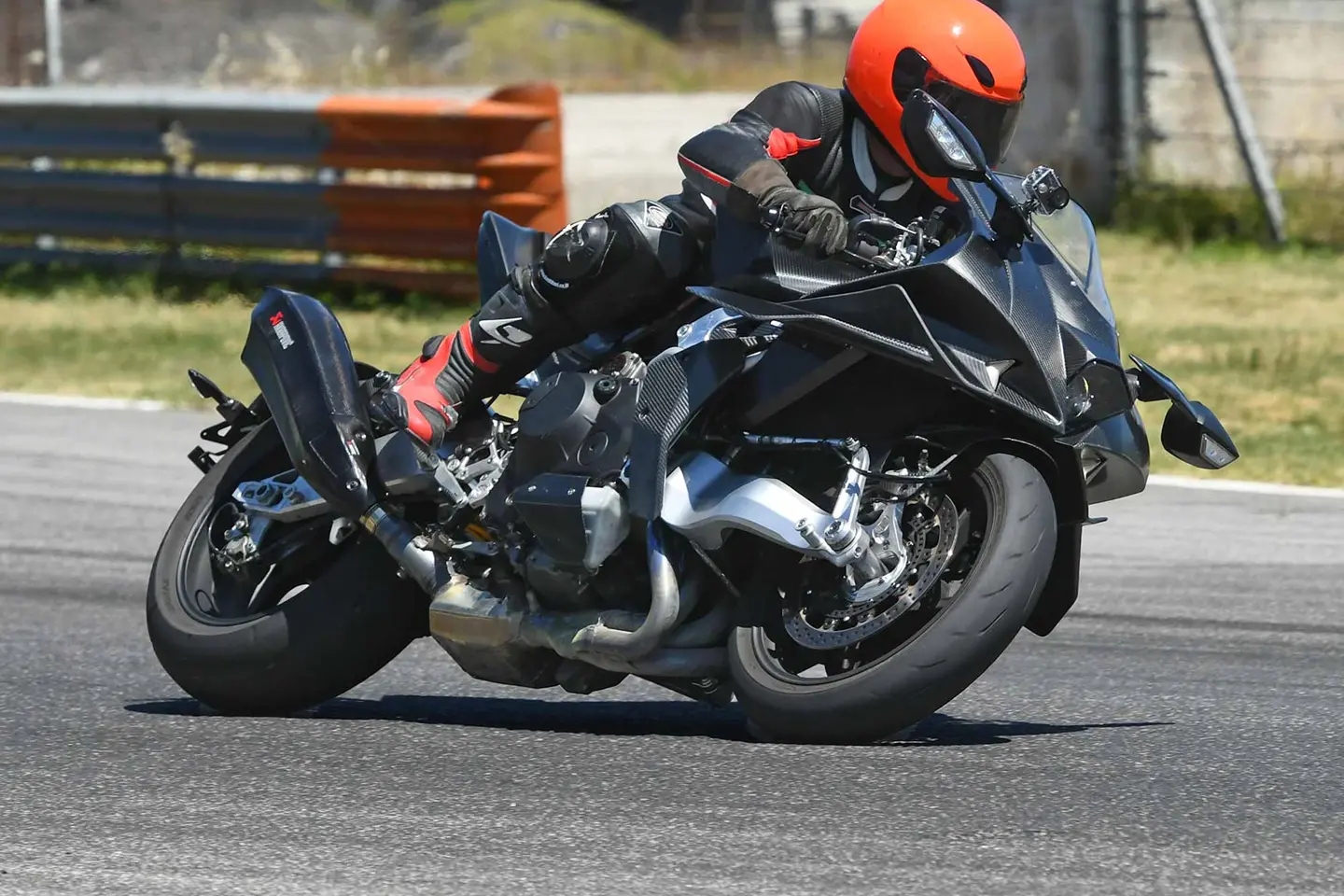Bimota Tesi H2 spotted testing
The Tesi H2, essentially a revitalised Tesi with a Kawasaki Ninja H2 engine, was created as a result of Kawasaki buying a majority share of the Italian brand
 That front fork means the Tesi H2 will stand apart from the rest of the litre-class crowd
That front fork means the Tesi H2 will stand apart from the rest of the litre-class crowdKawasaki first showcased the Tesi H2 at the 2019 EICMA, where we saw a purported concept which melded the engineering marvel that is the hub-centre front from the original Tesi with the brutal supercharged beast that is the Kawasaki H2’s 220-plus bhp engine (we’re considering the milder H2 and not the H2R’s even crazier 326bhp state of tune). The Tesi H2, however, maintained its individuality, with a beam-type frame, and not Kawasaki’s trellis, along with the adoption of a conventional double-sided rear swingarm. Carbonfibre is sprinkled liberally throughout the Tesi H2, with two massive wings on either side of the front cowl and the supercharger intake port.
Since then, there’s been one remarkable update: the Tesi H2 actually made it production! What we see here is the pre-production spec Tesi H2 (complete with head- and taillights, rear view mirrors and indicators) undergoing track testing. Not only does the Tesi H2 get the H2's engine (obviously, didn't you hear the chirping?), but it also retains the hub-centre front steering. This particular piece of tech will undoubtedly endow the Tesi H2 with exceptional handling and cornering ability, considering a hub-centre front dives much less under hard braking than a conventional fork, which means not only is weight-transfer less of an issue, but the negligible change in rake (and consequently wheelbase) effectively negates the risk of a tank-slapper.
Note – Though Bimota were not the ones who proposed the idea of a hub-centre front steering, it, along with Yamaha (for the GTS1000) was the brand popularising it with the Tesi, with the tech later also used for the revolutionary yet short-lived Vyrus 4V.
As with the concept, there is still an extensive use of carbonfibre cross the body panels on the model currently being tested, with the additional use of aluminium meaning the overall weight is kept low. Visually, the design of the front fairing resembles the H2, though the central headlight is flanked by air intakes which house slim DRLs which resemble snake eyes (or vampire fangs, if you so prefer) at a casual glance, with the indicators housed on the mirror casings.
In terms of hardware, the Tesi H2 will likely carry forward the Ohlins TTX36 gas charged shock at the rear, as well as the Ninja H2’s 4-piston Brembo Stylema calipers with 330mm dual discs up front and 2-piston 230mm disc at the rear. Additionally, the Tesi H2 will also most likely get the electronic suite from the Ninja H2, which consists of Kawasaki Cornering Management Function (KCMF), Kawasaki Traction Control (KTRC), Kawasaki Launch Control Mode (KLCM), Kawasaki Intelligent anti-lock Brake System (KIBS), Kawasaki Engine Brake Control, Kawasaki Quick Shifter (KQS) (upshift & downshift), and the Ohlins Electronic Steering Damper.
While the Tesi H2 was originally planned to go into production in June this year, the coronavirus outbreak has delayed its production plans towards September, with limited examples of the bike to go on sale overseas by the start of 2021. With the Indian perspective in mind, the Tesi H2 will probably be available on order in India, with prices comparable to the Kawasaki H2R.


